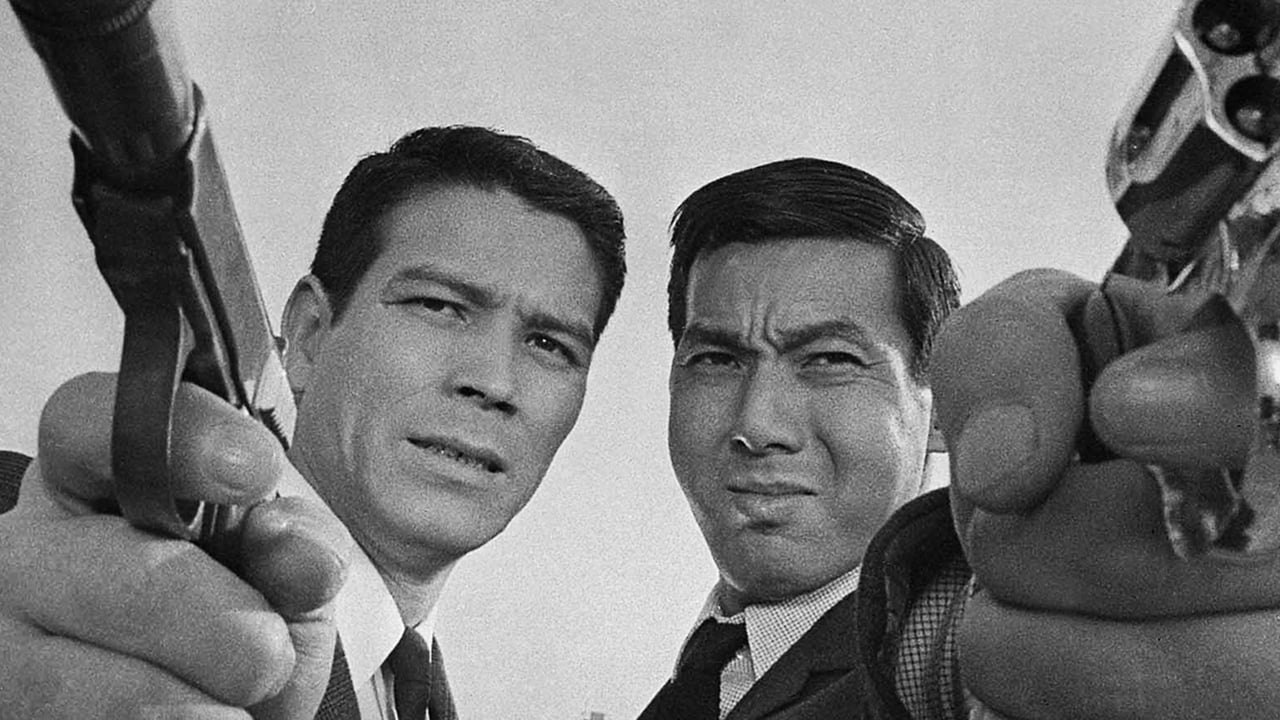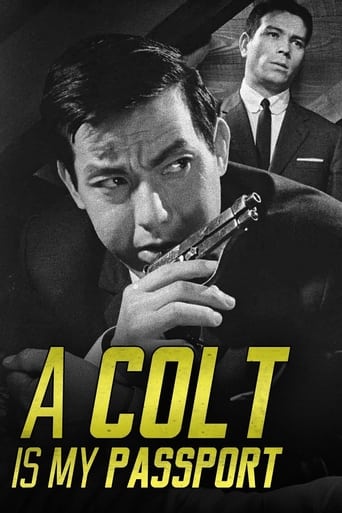CommentsXp
Best movie ever!
Pacionsbo
Absolutely Fantastic
Brennan Camacho
Mostly, the movie is committed to the value of a good time.
Jenni Devyn
Worth seeing just to witness how winsome it is.
boblipton
Imagine, if you will, that instead of making westerns, Sergio Leone had decided to make crime thrillers on the model of RIFIFI, but set in Japan. That's something like what you get here. Jô Shishido is a hit man hired to kill a rival crime boss muscling in on other territory. While waiting for his flight out of town, the dead man's son shows up and offers to make a deal for the assassin's head. Jules Dassin might want us to think there is honor among thieves, but Leone never would, and neither does the director of this movie, Takashi Nomura.It had a deliberately 1950s 'B' movie look, with its b&w photography and "stolen shot" camerawork, but the constantly moving camerawork and stunt gags are clear signs that this is serious film making.... and talented, too; Nomura is not that well known, but this is a good flick. Harumi Ibe's soundtrack starts out sounding like Morricone, but then switches to jazz arrangements for the crime story.
Yashua Kimbrough (jimniexperience)
Beautiful cinematography with a slow-paced story ;; Hitman hired to kill his boss rival gets double-crossed . He and his driver are now on the run and hide out in a hotel by the pier and fall for a woman who longs to escape Good concept , just slowly paced .
RResende
There was a lot going on in film world at the beginning of the 60′. The french critics (re)defined how we should see films: the idea that film is unlike literature or other art forms, and has rules of its own: visual narrative. Thus when we look today at the work of people like Hitchcock or Depalma, we can look at what they are doing, in the eye, although the stories they use to hang their visual ideas are (from a literature point of view) empty.Truffaut/Godard went further ahead and became filmmakers, playing and poking fun at American stereotypes, specially the gangster film (the hat, the smoke style basically).At the same time something even more interesting to me was happening in Italy, where western was being reworked, with irony and love, by a few Italians, led masterfully by Leone. The dollars films killed any chance we had to ever look at a classic western without clearly understanding how crooked is the whole Ford/Wayne concept of good/evil, and how prejudiced can pop culture actually be (Spielberg made recently a Ford inspired Bridge of Spies which, after the Iraq war, is still more offensive).The fun thing is that Leone, soaked in westerns and American pop culture (the guy grew literally in Cinecittà) got his lessons from Japan. The first dollars film is a remake of Kurosawa's Yojimbo.So this fun film closes the circle: a Japanese film which incorporates notions of American gangster films filtered through new wave french irony, and places the thing in a western context, taking the pace from Leone (and the music from Morricone), who himself went to Japan to start his adventure as a director. It really is fun just to get the references straight...
mevmijaumau
A Colt is My Passport (one of the most bad-ass titles ever?), starring Jo Shishido without his sunglasses, is the final, and definitely the best movie from the Nikkatsu Noir Eclipse box-set. It's directed by Takashi Nomura, by far the most obscure director on the set. Aside from this film, his only somewhat-not-that-obscure film is the Eastern- Western Fast-Draw-Guy (1961), which also starred Shishido and earned him the nickname Joe the Ace. As much as I'd like to see a spaghetti western made in Japan, it's unfortunately too obscure to be found.This movie, however, has a Morricone-like soundtrack that sounds like it should accompany a spaghetti western instead, with all the whistles and gunshots and everything that goes with it. But what's really surprising is that this music fits A Colt is My Passport perfectly, especially its final scene.Unfortunately, most of the plot is nothing to write home about, as the cool beginning and the orgasmically epic ending are simply too good for the middle portion of the film. The plot isn't really handled in an interesting way, and the token female character here is basically pointless (really, what purpose did she serve to the plot again?). So as I said, this film has to be seen specifically for the well-shot intro which shows the mob boss being assassinated, and the ending. Oh God, that ending. It's flawless. One of the best movie endings I've ever seen. Just... Holy sh*t. Those final 15 minutes more than make up for the cluelessness of the majority of the storyline.What makes the visuals of this film way better than the other ones from the same set is that it's not simply a copy of American noir photography. Nomura's movie is mostly bright grey and taking place during the day, with cool contemporary architecture and memorable set- pieces, like the tavern window that looks like a rifle scope frame. Technically, it's a superb film, and the final fifteen minutes are brilliant, but sadly the middle portion of the plot loses itself a little.

